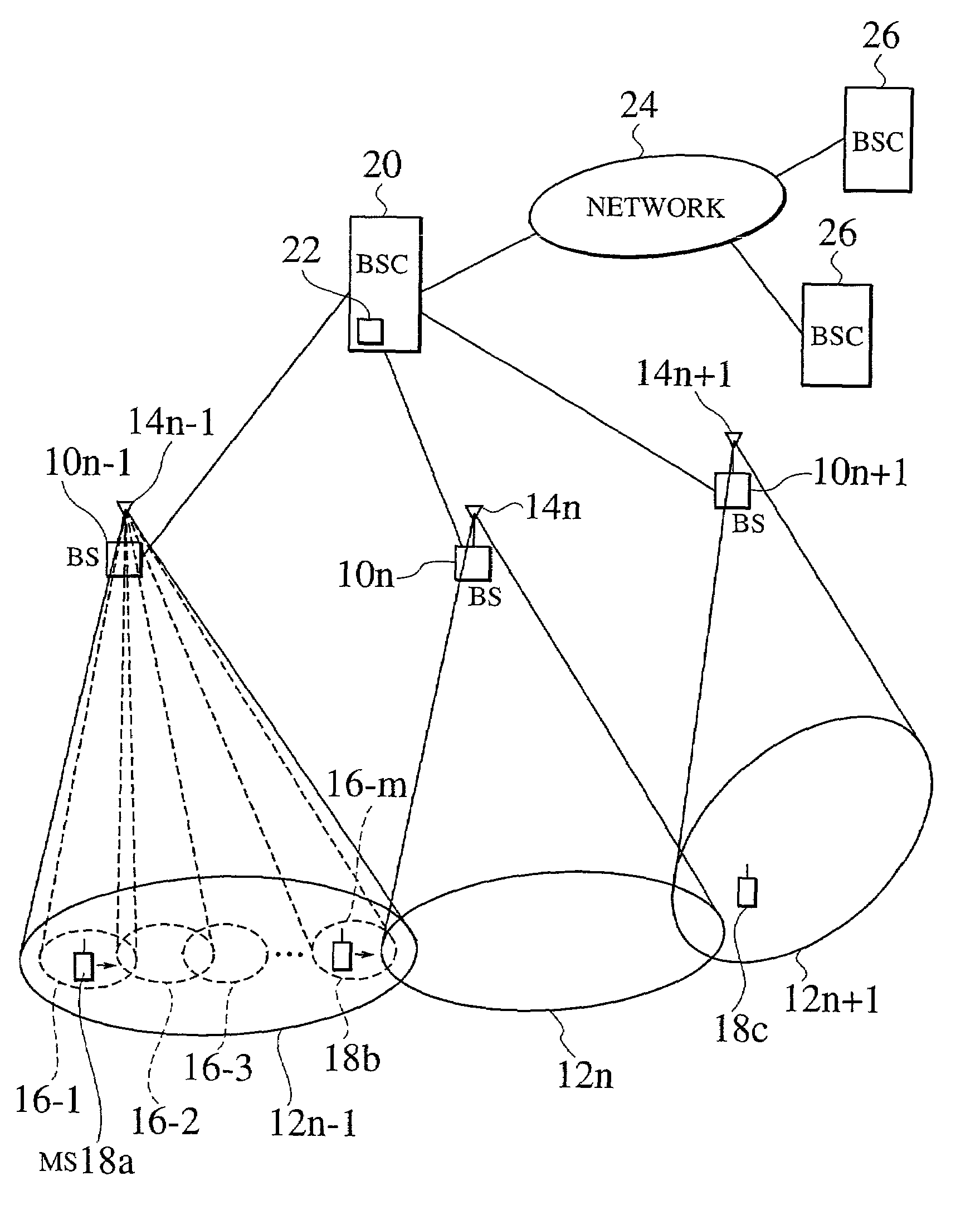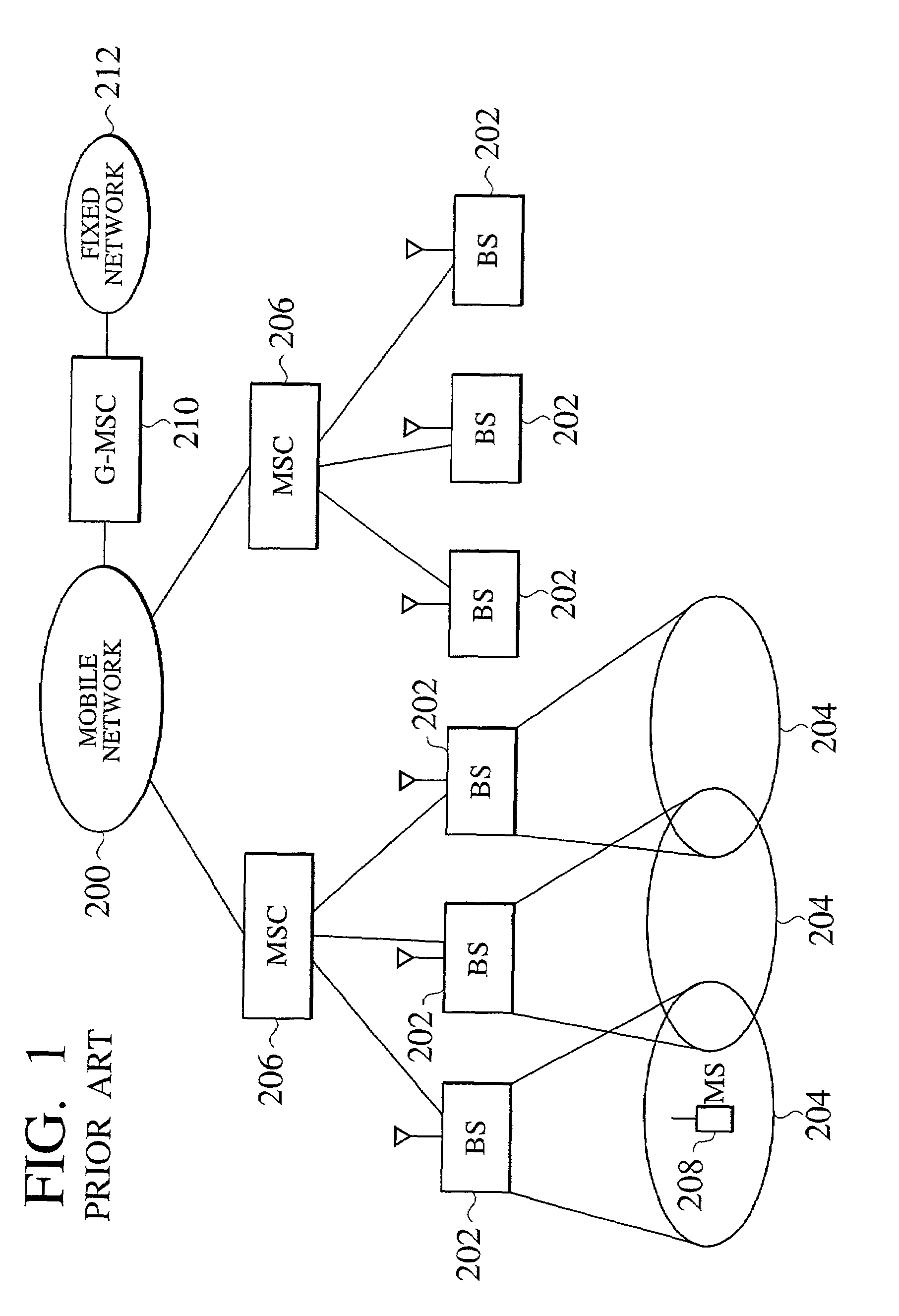Radio communication scheme
- Summary
- Abstract
- Description
- Claims
- Application Information
AI Technical Summary
Benefits of technology
Problems solved by technology
Method used
Image
Examples
first embodiment
[0046](First Embodiment)
[0047]FIG. 2 is a view showing a configuration of a radio communication system according to a first embodiment of the present invention. In the radio communication system according to the first embodiment of the present invention, a plurality of areas (cells) covered by each base station constitute an entire service area of a mobile communication network. In FIG. 2, the explanation is done under the assumption that the number of base stations managed by one base station controller is 3, for the purpose of simple explanation.
[0048]In the radio communication system according to the first embodiment of the present invention in FIG. 2, areas (hereafter, referred to as base station areas) 12n−1, 12n and 12n+1 managed by radio base stations 10n−1, 10n and 10n+1 divide parts of an service area and covers them. The respective radio base stations 10n−1, 10n and 10n+1 have antennas 14n−1, 14n and 14n+1, respectively, which can generate a plurality of beam patterns. Eac...
second embodiment
[0091](Second Embodiment)
[0092]A second embodiment of the present invention will be described below. In this second embodiment, a setting example of a radio channel in the first embodiment of the present invention is explained by using five examples.
[0093](First Radio Channel Setting Example)
[0094]FIG. 9 is a view explaining a first radio channel setting example according to the second embodiment of the present invention. In FIG. 9, the explanation is done under the assumption that the number of radio base stations managed by one radio base station controller is 5, for the purpose of simple explanation. Also, it is assumed that the number of radio channels which can be used within one base station controller is 3.
[0095]In a radio communication system shown in FIG. 9, a radio base station controller 86 manages five radio base stations 88 (88a, 88b, 88c, 88d and 88e) and carries out the respective controls. Those five radio base stations 88 are installed for each approximately “r” int...
third embodiment
[0133](Third Embodiment)
[0134]A third embodiment of the present invention will be described below. The first and second embodiments are the embodiment with regard to the hand-over process between the radio base stations within the area managed by one radio base station controller. However, this third embodiment is an embodiment with regard to a hand-over process between two different radio base station controllers. FIG. 15 is a view showing a configuration of a radio communication system according to the third embodiment of the present invention. In the radio communication system according to the third embodiment of the present invention, similarly to the first embodiment, a plurality of areas (cells) managed by each base station are gathered to constitute the entire service area in the mobile communication network. Also, in FIG. 15, the explanation is done under the assumption that the number of base stations managed by one base station controller is 3, for the purpose of simple il...
PUM
 Login to View More
Login to View More Abstract
Description
Claims
Application Information
 Login to View More
Login to View More - R&D
- Intellectual Property
- Life Sciences
- Materials
- Tech Scout
- Unparalleled Data Quality
- Higher Quality Content
- 60% Fewer Hallucinations
Browse by: Latest US Patents, China's latest patents, Technical Efficacy Thesaurus, Application Domain, Technology Topic, Popular Technical Reports.
© 2025 PatSnap. All rights reserved.Legal|Privacy policy|Modern Slavery Act Transparency Statement|Sitemap|About US| Contact US: help@patsnap.com



